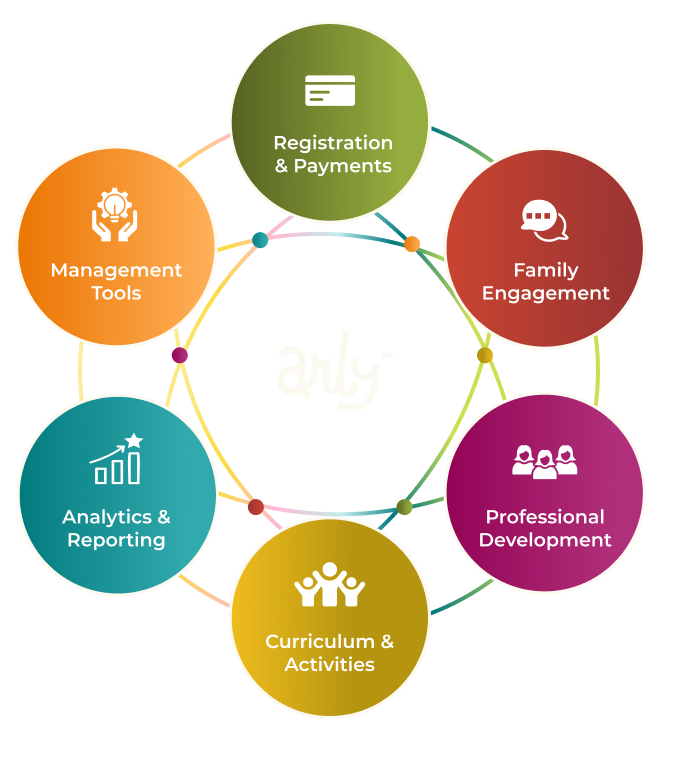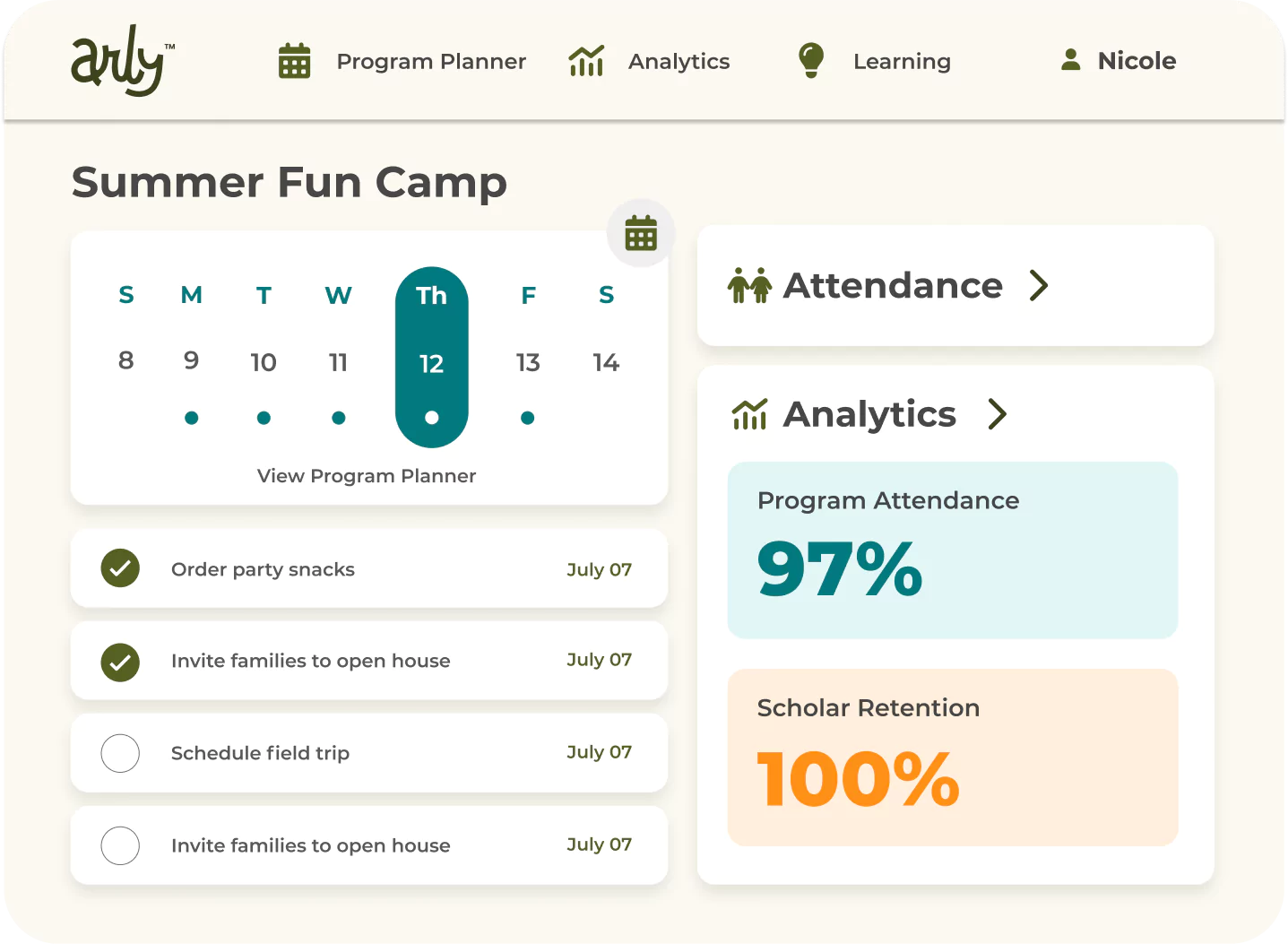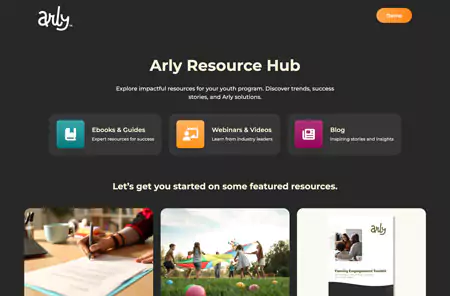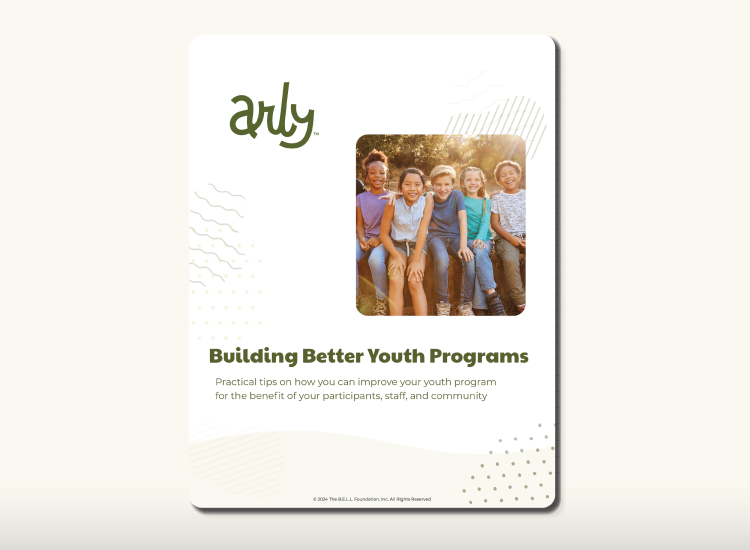10 Tips for Recruiting, Retaining & Developing Staff
By Arly Communications on October 27, 2022
No matter how passionate you are about serving kids and families, you can’t fulfill your mission without the right staff. Learn how you can find the right staff for your program and how to retain them for long-term success.
Staffing Challenges Impacting Youth Programs
Many youth programmers are experiencing staffing challenges. According to research from the Afterschool Alliance, “Concern surrounding the ability to hire enough staff during the summer has continued to trend upwards, from 44 percent in the spring of 2021, to 57 percent in the summer of 2021, and now reaching a high of 66 percent” in 2022.
Staffing challenges can lead to difficulties like:
- Student capacity limitations: Without adequate staff, you may have to put some prospective students on waitlists or turn them away. This limits your impact in the community and can leave some kids without the vital programming they need to realize their potential.
- Staff stress and burnout: Operating with a skeleton crew can mean staff members are trying to do more than is expected. For instance, some may be juggling administrative duties alongside curriculum design and tutoring. When staff members are overwhelmed, they can become stressed and burned out.
- Increased program costs: Trying to recruit and retain staff typically comes at a cost. Pouring money into staffing efforts can force programs to raise participation fees, negatively impacting families.
Strategies for Recruiting and Retaining the Right Staff
Let’s look at 10 tips from our experts to help you improve your recruitment and professional development so you can enjoy a program staffed for success.
1. Talk to your families to find candidates.
The best folks to recruit for your program may be hiding under your nose. Reach out to parents, guardians, or siblings of program participants because they’ve seen your program operate firsthand and may be interested in volunteering or taking on a part- or full-time position.
2. Partner with local colleges and universities.
Colleges and universities can also be great sources for recruiting. Get in touch with administrators or specific department chairs and teachers to find out how you can partner with them. For example, education students may be looking for volunteer opportunities to gain experience, making this a mutually beneficial arrangement.
3. Leverage school partnerships.
Build a relationship with your local school administration because they may be able to pinpoint certain teachers or other school staff who may be assets to your program. They can also help spread the word to the community. Don’t underestimate the power of word-of-mouth.
4. Get people excited about your program.
People will be more interested in working with your program if they see the exciting mission they could be a part of. Share testimonials to provide some insight into the impact of your program. You should also leverage communications and events to attract not only donors, but also potential staff and volunteers.
5. Be mindful of teachers’ schedules.
Teachers work hard throughout the school year, so if you want to bring teachers on staff, you should be mindful of their schedules and need for breaks. For summer programs, consider starting a week or two after the end of the school year and ending a bit before the next school year starts. Or, you can provide flexibility for teachers to only sign up for half the summer or a certain number of weeks. Providing curriculum and daily agendas for teachers to follow also makes for a more stress-free experience that can encourage their participation.
6. Offer competitive compensation and benefits packages.
Increasing salaries is the most common measure that summer and afterschool program providers report taking to attract and retain staff. As your budget allows, consider increasing staff salaries. This communicates that you value their time and encourages them to invest in your program.
7. Focus on the mental well-being of staff members.
Burnout can be a common issue for teachers, tutors, and youth programmers, so it’s important to prioritize staff’s well-being. For example, the Boys and Girls Club of Kansas City hosts self-care events for staff, offering massages and other perks to help staff members unwind.
8. Continue to be selective with who you hire.
Staffing challenges can make it tempting to lower your standards for staff. However, successful programs rely on passionate and qualified staff members, so keep those standards high. Look for fun, high-energy people who care about students and are integrated into the community. You can use training and a quality staff onboarding experience to help staff who have the passion but need a little more instruction.
9. Offer professional growth and development opportunities.
Training shouldn’t stop with staff onboarding. Volunteers and employees can enjoy a more fulfilling experience when you help them expand their skills and expertise. (The kids will benefit too!) Empower staff members with quality training resources for professional development. A platform like Arly can make it easier to disseminate this training to your staff.
10. Give staff members opportunities for advancement.
When filling leadership positions, start by looking within your program. Some of your current volunteers or staff may have great potential for future leadership. Take time to talk with staff, invest in their learning, and provide opportunities for advancement within the program so you can help them thrive and take advantage of their gifts.
Download the Staffing Toolkit to learn more!
The right staff can help your program fulfill its mission, so it’s time to start recruiting, onboarding, and training staff according to these best practices. Access guidance, tip sheets, planning tools, and sample language for successful program staffing with the "Staffing Toolkit for Out-of-School Time Learning Programs"!






%20(50).png)

%20(38).png)
%20(48).png)
%20(30).png)